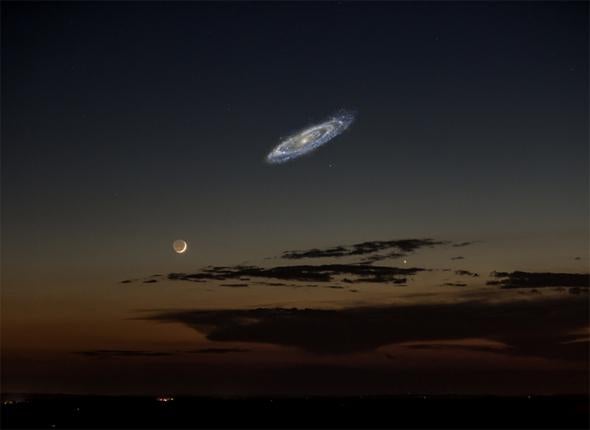Apparently we get one every so often, and then they leave a short time later in a sort of astronomical summer fling. Pretty neat. If we did get a permanent new moon, I wonder what it would be called? Probably “Moony McMoonface.” ![]()
It’s not really a moon of Earth as it is actually in a resonant co-orbital relationship with the Sun but 3753 Cruithne is the closest thing we have to a quasi-permanent second moon.
Stranger
Someone asked in a chat yesterday if the mini-moon would have a tidal effect. They were picturing something rather larger than a rock 36 feet across. (Not that that’s not an impressively large rock, but it’s rather less than the images “mini-moon” conjures.)
Given that its size keeps getting compared to a city bus and the relative briefness of its visit, I propose calling it TART (Terra Area Rapid Transit). ![]()
I was fascinated when I learned about Cruithne several years ago, but it’s not unique. Several more Near-Resonant Near-Earth objects (NEOs) have been discovered in recent years:
This ought to be of interest, too:
I have to quibble with that headline a little bit. This is not a second mini-moon. We have one moon-sized moon already. This new object will be the second moon, but the only mini moon.
You mean it’s really a Moon of Unusual Size.
Moon Of Unusual SizE
Deimos is about 6.2 km on average.
Among Jupiter’s many moons, the miniest known so far is the smartly named S/2010 JII which is 1-2km. Of course there are likely to be many more mini-moons of Jupiter.
For Saturn the current smallest is Aegaeon which is extremely elongated. Only about a half km thick.
Strangely, the smallest moon of Pluto, Styx, is larger than any of the above.
36 feet/11 meters isn’t especially impressive. The Chelyabinsk asteroid was around 18 meters, so the mini-moon is around 1/5th the mass of that. About the worst it could do is get Mary Moon stuck in your head.
In space, it’s not impressive. As a moon, it’s not impressive. It takes a lot to be impressive in space. If it were sitting on your lawn, though, it would make an impression. XD
(Facetiousness aside, I was specifically pointing out the difference between human scale and space scales. To a human on Earth, a rock that size is a big rock. In space, it’s a dust mote against a darkened sky.)
Sadly, this fall’s mini-moon, named 2024 PT5, is too small and will be too far away to see, except with a really large telescope. That kind of diminishes general interest in it. It would be cool if something with an apparent size as big as the actual moon passed nearby.
Actually, the Andromeda galaxy has an apparent size several times larger than the moon, but is too dim to see without a telescope. This is what it would look like if we could see it with the naked eye:
